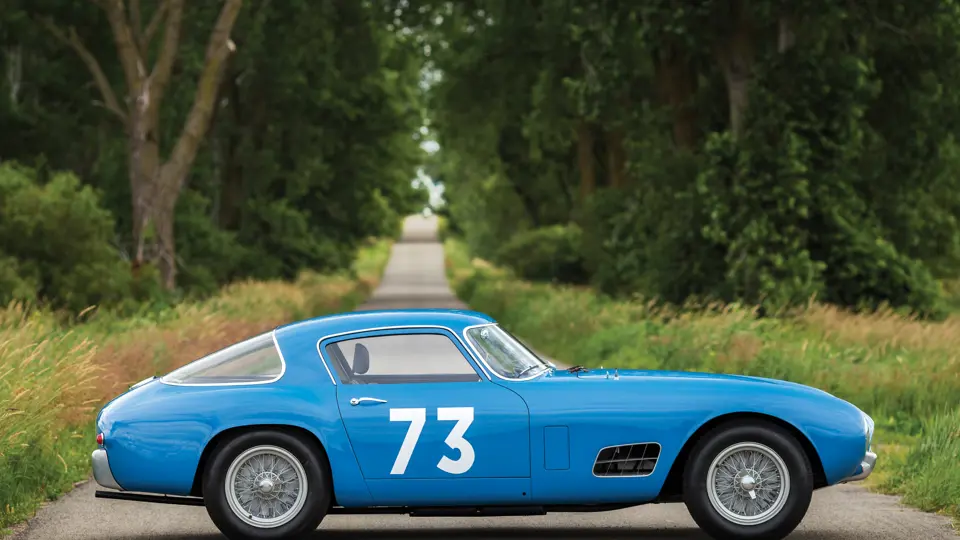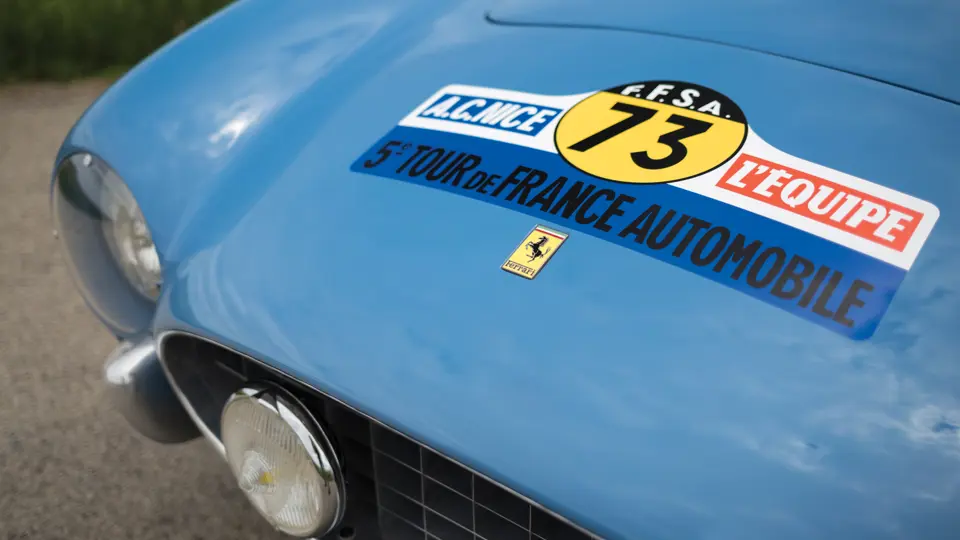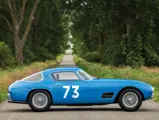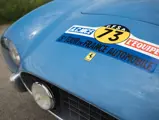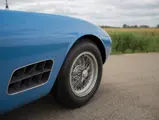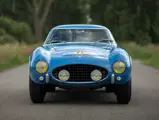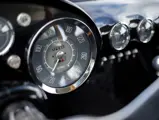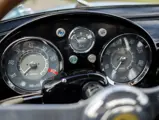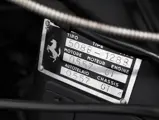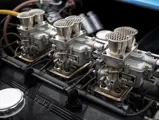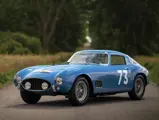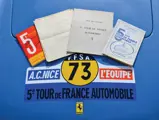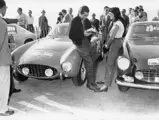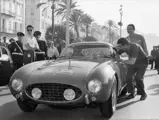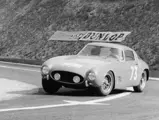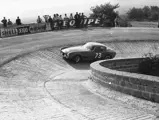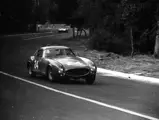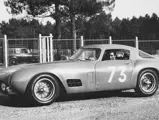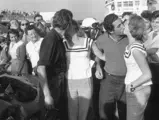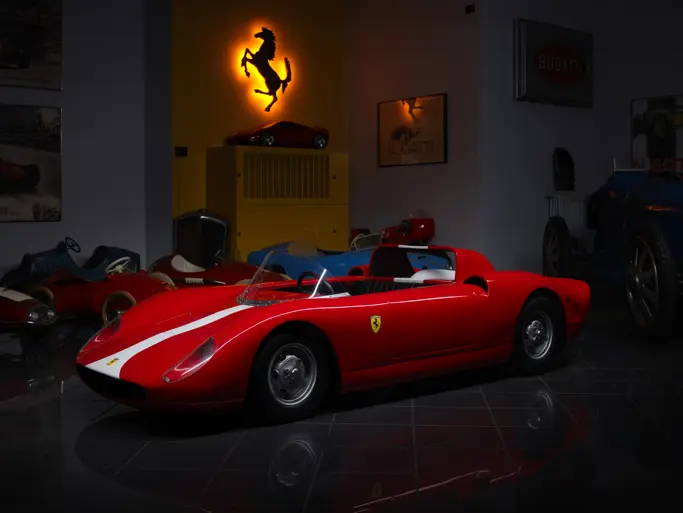
1956 Ferrari 250 GT Berlinetta Competizione 'Tour de France' by Scaglietti
{{lr.item.text}}
$13,200,000 USD | Sold
{{bidding.lot.reserveStatusFormatted}}
- Placed 1st overall at the 1956 Tour de France Auto
- The actual car that instituted the “Tour de France/TdF” nomenclature
- Raced and owned by the legendary Marquis Alfonso de Portago
- The fifth of only seven Scaglietti-bodied first-series competition berlinettas
- Awarded First in Class at Pebble Beach and Meadow Brook and the Prix Blancpain Award at the Louis Vuitton Concours d’Elegance
- Cavallino Classic Platinum award winner
- A once-in-a-lifetime opportunity to acquire one of the most historically significant competition Ferraris of all time
260 bhp, 2,953 cc SOHC V-12 engine with three Weber 38 DC3 carburetors, four-speed all-synchromesh manual transmission, independent front suspension with unequal-length A-arms and coil springs, live rear axle with semi-elliptical leaf springs and parallel trailing arms, and four-wheel drum brakes. Wheelbase: 102.4 in.
THE 250 GT BERLINETTA
If there was to be one positive outcome of the horrific accident at the 1955 24 Hours of Le Mans, it was the FIA’s return to emphasizing dual-use grand touring cars. This stimulated a new chapter in the design and build of road going competition sports cars from manufacturers across Europe. During the 1955 season, Ferrari disproportionately focused on its grand prix program, and Armando Zampiero took advantage by winning the Italian Sports Car Championship in his Mercedes-Benz 300 SL. Keen to return the title to an Italian manufacturer, Ferrari commissioned Scaglietti to build a new series of competition berlinettas centered on the 2,600-millimeter-wheelbase 250 GT chassis, which already qualified for the FIA’s new GT-class formula.
Based on a short progression of Pinin Farina show cars that were fashioned after the 250 and 375 MM designs, the new Scaglietti coachwork featured a truncated fastback rear end with a large glass section, a long front deck with curvaceous fenders, frontally placed headlamps, and a large egg-crate grille. Beginning with chassis number 0503GT, Scaglietti built just nine cars in this first style before subtle redesigns saw an increasing number of louvers in the rear sail panels. Zagato built coachwork for an additional five examples of the initial series, bringing the total number built to 14.
The first few berlinetta examples faired reasonably well in various European hill climbs and sprints over the summer of 1956, but the new road going competition model experienced its greatest success at the Tour de France Auto in September, a six-day rally of hill climbs, drag races, and circuit competitions. Piloted by a flamboyant and daring Spanish marquis, the new berlinetta was to become synonymous with the French race itself.
THE MARQUIS DE PORTAGO
Few figures in racing history, which is given to be awash in extraordinary men of great accomplishment, could match the Marquis’ lust for life, his mercurial success in racing, or his tragic demise.
Alfonso de Portago was officially named Alfonso Cabeza de Vaca y Leighton, Carvajal y Are, 13th Conde de la Mejorada, 12th Marquis de Portago; he was born in October 1928 to a long line of Spanish nobility that included famous New World exploration figure Álvar Núñez Cabeza de Vaca, a onetime governor of Rio de la Plata. Portago’s grandfather was the governor of Madrid, and he was named for his godfather, Alfonso XIII, the last king of Spain.
Portago’s father, Antonio Cabeza de Vaca, led a larger-than-life existence as an accomplished gambler and polo player who starred in his own movies and once took boxing lessons from the controversial heavyweight champion Jack Johnson. Cabeza de Vaca’s example would seemingly play a huge role in the young Marquis’ casual disregard for danger, which was perhaps emphasized by his father’s early death from a heart attack during a polo match.
Following the elder Marquis’ passing, his widow (an Irish beauty who had inherited a vast American estate from her first husband) moved the young Alfonso to America for schooling. After being expelled from The Lawrenceville School, it was clear that the Marquis did not take to such formality, and his mother was soon forced to relocate him to her residence within the Plaza Hotel in New York, where he befriended an elevator boy named Edmund Nelson. The two boys would become friends for life, eventually experiencing great racing thrills together before their ultimate bonding experience in death.
Alfonso de Portago, known to friends as Fon, grew to be an athletic young man, excelling in swimming, jai alai, and polo. His equestrian skills were impressive, and he was one of the world’s leading steeplechasers in 1951 and 1952, despite sometimes being thrown from his horse. Portago seemed to routinely challenge himself to ever-more difficult feats, such as his bobsledding stint, where he learned the sport’s nuances in roughly two weeks in order to lead the Spanish national team at the 1956 Olympics. He was also an accomplished pilot, once flying beneath a bridge to win a bet.
Despite the hours required for all of these pursuits, Portago always found the time to chase beautiful women, marrying New York socialite Carroll McDaniel in 1948, at the age of 20. Though the couple had two children, the Marquis could never resist the lure of the feminine chase, and he was known to be a regular philanderer. His courtships of Revlon spokesmodel Dorian Leigh (said to be a partial inspiration for Truman Capote’s Holly Golightly character from Breakfast at Tiffany’s) and actress Linda Christian (an early Bond girl on a television version of Casino Royale) were his most high-profile affairs. In a telling interview with automotive writer Ken Purdy, Portago once said, “The most important thing in our existence is a balanced sex life.”
Meanwhile, the Marquis and his wife lived in Europe for most of their relationship, and he began experimenting with midget car track racing in Paris during 1953. In October 1953, while attending the Paris Salon, Portago had a chance meeting that would change his life, forming a quick bond with Scuderia Ferrari driver Luigi Chinetti. The famed North American Ferrari importer invited Fon to be his co-driver at the Carrera Panamericana, which was to be held two weeks later, and the Spaniard couldn’t resist the opportunity, holding on for dear life in Chinetti’s 375 MM as a passenger for the entire race. With his eyes opened to the art of racing, exercised at its finest by Chinetti, Portago was bitten by the racing bug and soon bought his own 4.5-liter Ferrari.
Starting to compete in earnest in 1954, Portago passionately threw himself into each and every contest, as he did with everything he pursued in life. Not even yet knowing how to change gears at speed, the Marquis teamed with the well-known Harry Schell in a Ferrari 250 MM at the 1,000 KM of Buenos Aires in January 1954, finishing 2nd overall. After a DNF at Sebring in 1954, Portago sold the Ferrari in favor of a Maserati A6GS and began to learn the subtleties of the various circuits and needs of his cars. He was leading the first leg of the 1954 Carrera Panamericana when his Ferrari 750 Monza broke down.
In November 1955, Portago placed 2nd at the Venezuelan Grand Prix in the Ferrari Monza, finishing behind only Juan Manuel Fangio’s Maserati 300S. Fangio would later say of Fon, “I considered him one of the most courageous of all the racing drivers…a good driver and an excellent comrade.” In December, the Marquis’ efforts saw real dividends, with three victories at the Bahamas Speed Week in his Monza.
Portago was recruited in early 1956, on the basis of his growing success and prestige as a Ferrari customer, to serve as an official member of Scuderia Ferrari, racing Ferrari/Lancia D50 examples in F2 races over the next two years, as well as various sports cars. He continued to campaign an assortment of four-cylinder Ferraris (857 S, 860 Monza, 500 TR, and 625 LM) and started racing one of Maranello’s new 250 GT racing berlinettas, chassis number 0557GT (the feature lot), in October 1956, winning the Tour de France Auto and Coupes du Salon, as well as the Coupes du USA in April 1957. His victory at the 1956 Tour de France was the first of four consecutive victories for the mighty 250 GT Berlinetta model at the French race, a foundation of its legend and TdF namesake.
By spring 1957, Portago was widely considered to be one of the ten best drivers in the world, a phenomenal accomplishment considering that he had never driven a real race car prior to 1954. His outsized personality played well in the media, where he was endlessly quotable, and he was even occasionally provoked into fistfights. In a highly publicized interview with Sports Illustrated magazine, Portago said, “Racing is a vice and as such extremely hard to give up.” Many writers and racing peers were convinced the Marquis had a death wish, as he frequently drove his cars to extremes, very aggressively, and with little regard for long-term consequences.
All of these factors ominously bore down upon the Marquis at the Mille Miglia in May 1957, where his own temerity finally became his undoing. Portago already detested the notoriously dangerous Italian road race, once saying, “It’s a terrible thing, the Mille Miglia.” But matters were made even worse when the last-minute substitution of an ill Scuderia driver forced Portago to take the wheel of a model he already disliked, Ferrari’s 335 Sport. With long-time compatriot and frequent co-driver Edmund Nelson as his navigator, Portago set off with reckless abandon, unable to stifle his competitive instinct despite his misgivings about the car and the course.
For several legs, Portago managed the 335 S quite admirably, but in typical style, he refused to listen to the admonition of pit crews who noticed one of the rear tires rubbing away from contact with the fender. The Marquis ironically refused to waste time with a tire change. A famous photograph was taken of Fon kissing Linda Christian during a late pit stop out of Florence; she had flown out to meet him. Minutes later, just 30 miles from the finish line, after clearing a curve outside of Mantua, the worn rear tire blew out while the car was doing close to 150 mph. The rear axle failed and sent the 335 into the air, through a concrete mile marker and a telephone pole, before it careened and rolled through two ditches.
Nine spectators were killed in the accident, and both Portago and Nelson were killed almost instantly. The tragedy of the accident extended beyond the death of the young Marquis at just 28 years old, though. It signaled the death of the Mille Miglia itself, as the race’s organizers, finally bowing to growing pressure to banish the deadly event once and for all, canceled the legendary contest. In doing so, they ended a golden era in European sports car road racing.
CHASSIS NUMBER 0557GT
This long-wheelbase 250 GT may be the most important Tour de France example. As winner of the 1956 Tour de France Auto, it is the primary namesake of the TdF moniker.
Chassis number 0557GT is the ninth example of fourteen first-series cars and the seventh of only nine to be clothed in Scaglietti’s louver-less coachwork. Originally sold to the Marquis Alfonso de Portago on April 23, 1956, the car took some months to prepare, with original build sheets showing the specification of the rear axle on August 28 and the Tipo 128B engine on September 10.
Registered with Italian tags reading BO 69211 and decorated with #73, the ravishing Berlinetta was entered by the Marquis in the Tour de France Auto on September 17, where he was joined by Ed Nelson. The 1956 TdF was routed at 3,600 miles and included two hill climbs, one drag race, and six races at various circuits, including Le Mans, Comminges, Rheims, and Montlhéry. Portago and Nelson managed to win five of the six circuits, taking 1st overall in the Tour and beating both Stirling Moss’s Mercedes-Benz 300 SL and future three-time Tour winner Olivier Gendebien’s Ferrari 250 Europa GT.
On October 7, the Marquis drove the Berlinetta to a 1st overall finish at the Coupes du Salon at Montlhéry, while two weeks later the car achieved a 1st in class finish at the Rome Grand Prix. Portago’s final triumph in this car came the following year at the Coupes USA on April 7, where he once again took 1st overall. Sadly, this would be the car’s final outing with the Marquis at the wheel, as his tragic death in the 335 S would occur a month later at the Mille Miglia.
Following Fon’s passing, chassis number 0557GT was returned to the Maranello factory and was offered by the Portago family to Alfonso’s friend, C. Keith W. Schellenberg, of Richmond, Yorkshire, England, a Lichtenstein-descended shipping magnate. Schellenberg kept 0557GT for over two decades, and the car was seen little before being offered for sale in 1983.
Chassis number 0557GT was then purchased by the esteemed Peter G. Palumbo, of England, who sold the car in 1992 to Lorenzo Zambrano, the late and equally esteemed Ferrari collector who resided in Monterrey, Mexico. During his ownership, the car received a ground-up restoration by highly respected Ferrari restorer Bob Smith Coachworks, of Gainesville, Texas. Shortly after the restoration, a leather-bound book documenting the car’s history and restoration process was produced to showcase its amazing story and restoration, and this book still accompanies the car. Often seen during Zambrano’s ownership with California dealer plates reading 31333, the 250 GT was exhibited frequently over the following 12 years, starting with a First in Class win at the International Ferrari Concours d’Elegance at Monterey, California, in August 1994. A few days later, the car was displayed at the Pebble Beach Concours d’Elegance, again taking home a First in Class award.
Presented as a non-judged entry at the Cavallino Classic in February 1996, the Berlinetta then won the Prix Blancpain Award at the prestigious Louis Vuitton Parc de Bagatelle Concours d’Elegance in Paris in September. Shown at Rétromobile the following February, the car then returned to the United States and was exhibited at the Meadow Brook Concours d’Elegance in August 1997, where it garnered a Blue Ribbon award. Presented again at Pebble Beach in August 2004, the Berlinetta won a Third in Class award and then took a Platinum award at the FCA’s International Concours a few days later.
Following Mr. Zambrano’s passing in May 2014, this exquisite and historically important 250 GT was domiciled within his estate and is now offered for the first time in 23 years. The car remains in excellent condition following a recent service and has clearly been very well maintained after its restoration by Bob Smith Coachworks.
As the first 250 GT Berlinetta to win the Tour de France and the fifth of only seven Scaglietti-bodied first-series competition berlinettas, 0557GT is without exaggeration one of the most significant Ferrari competition sports cars to ever be offered publically. It holds a highly significant place in Ferrari history and stands head and shoulders above the rest of TdF production as the most important example of the model. Also claiming the unique original ownership of the fascinating Marquis Alfonso de Portago, one of racing’s most flamboyant fallen stars, this sensational TdF is accompanied by copies of its original build sheets and period photographs, affirming its fantastic history.
Undoubtedly the most important of all the 250 GT Tour de France examples, this influential long-wheelbase Berlinetta should attract the interest of top-tier Ferrari collectors and connoisseurs worldwide, as it would comfortably join the most significant collections of Maranello’s finest. This very TdF gave the model its iconic nickname with its stunning victory at that race in 1956, and as such, it is not only a valuable piece of Ferrari lore but also a hugely significant and successful competition vehicle. This represents the first time chassis 0557GT has been offered for sale in over two decades, and it is very likely an opportunity that will never present itself again.
Make no mistake, this is a singular opportunity to purchase an important piece of Ferrari history.
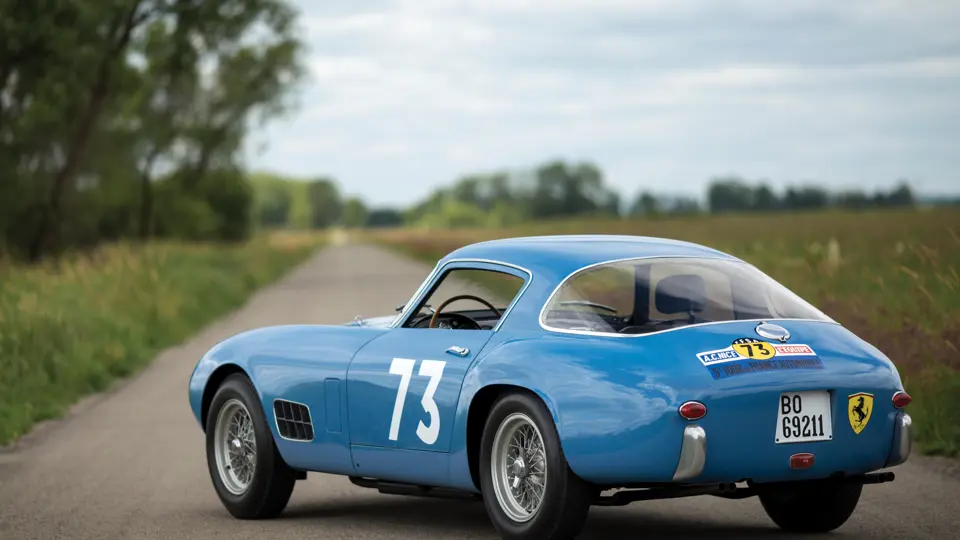
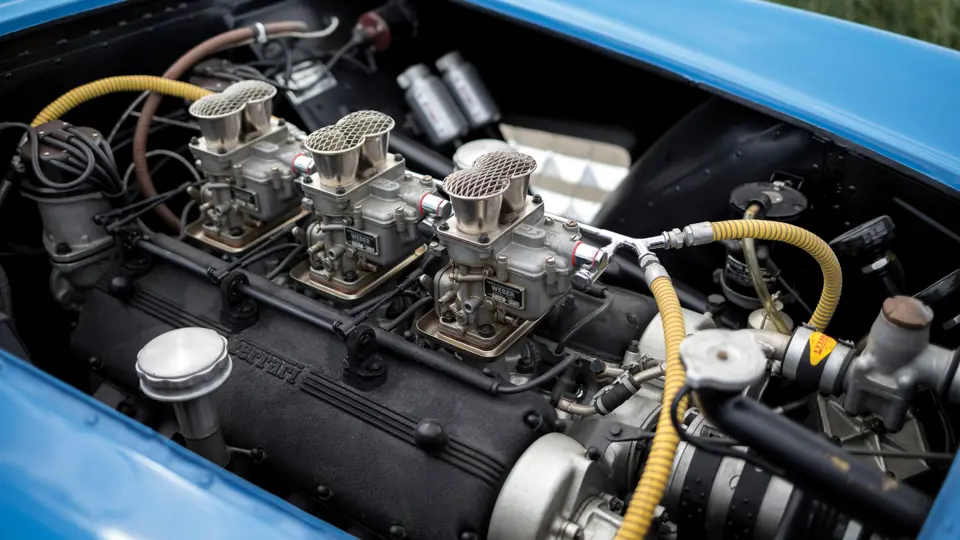


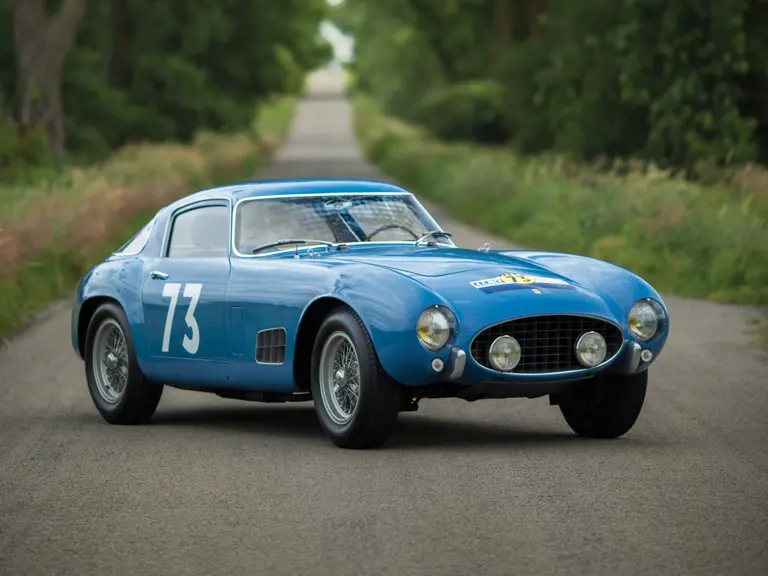
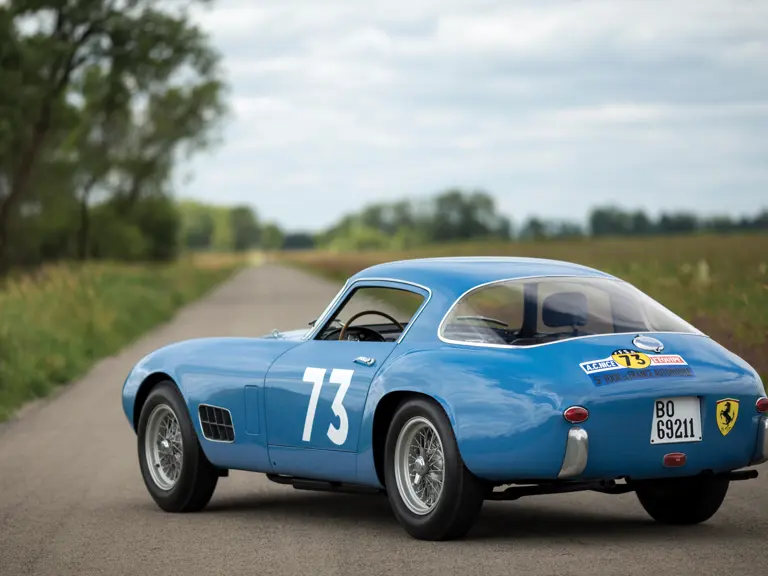
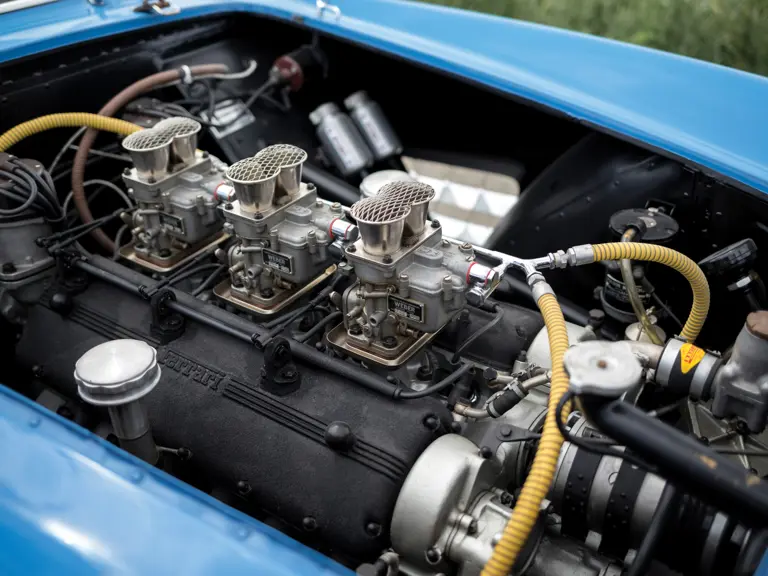

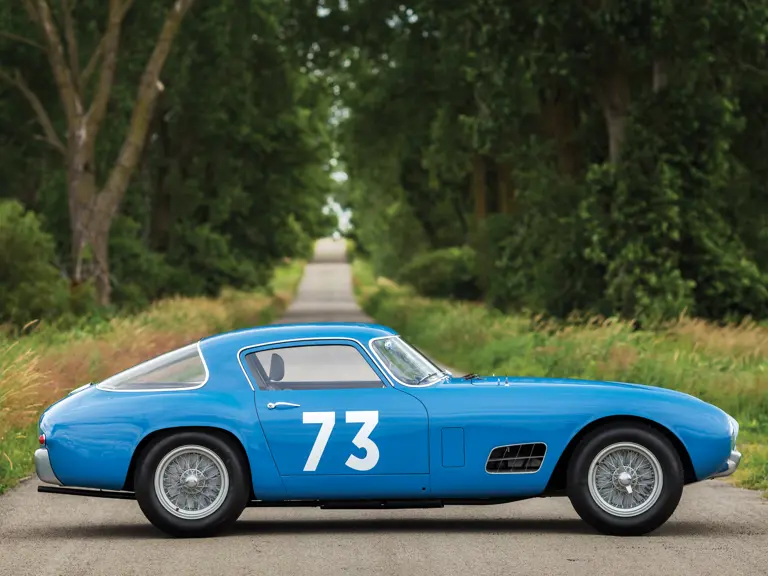
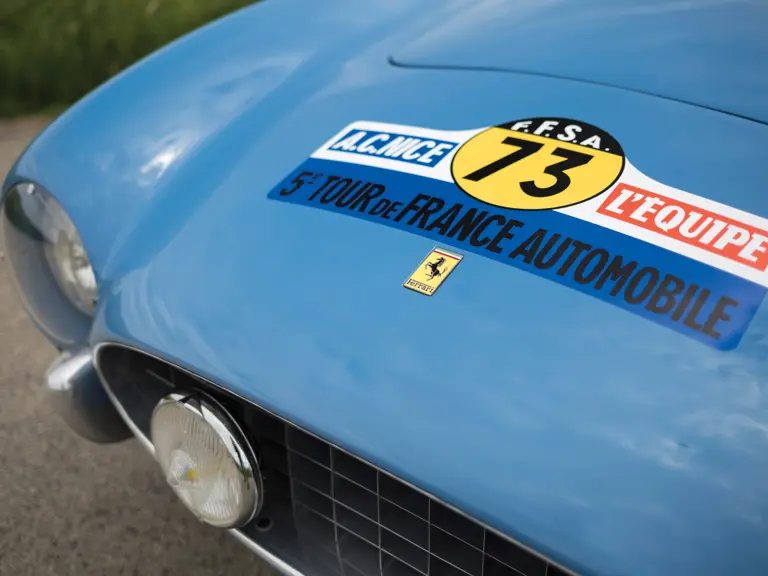
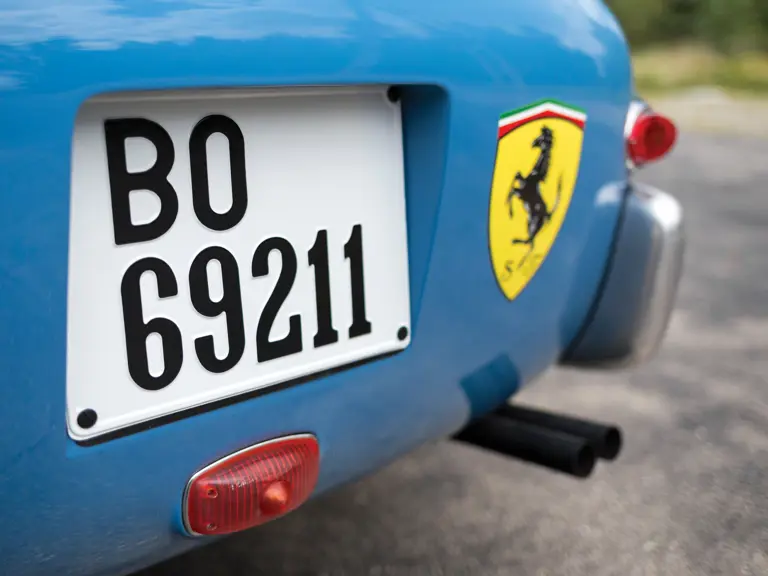
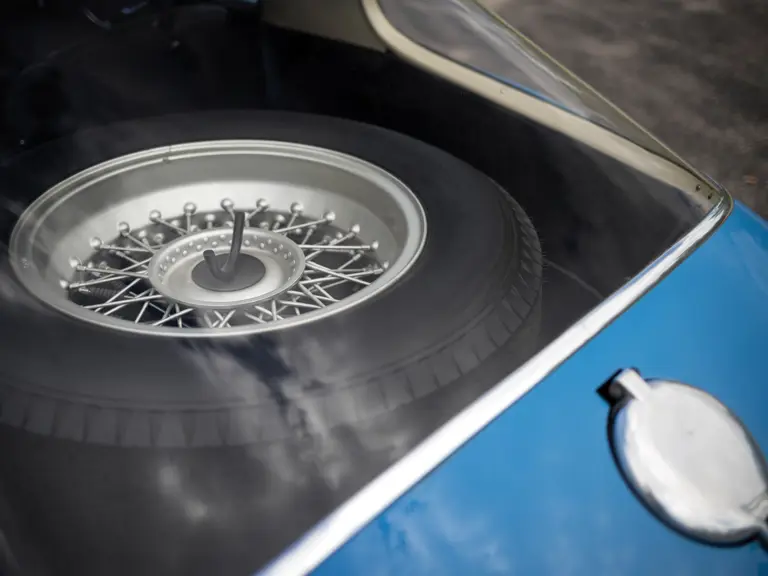
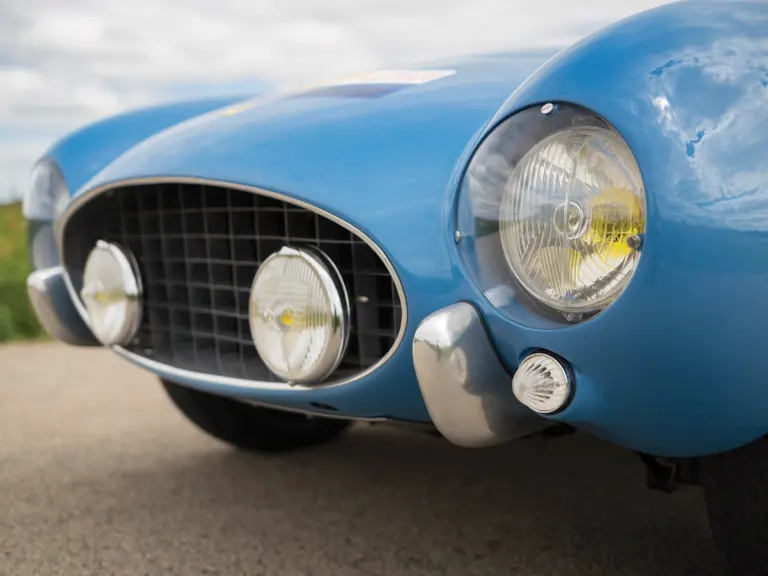
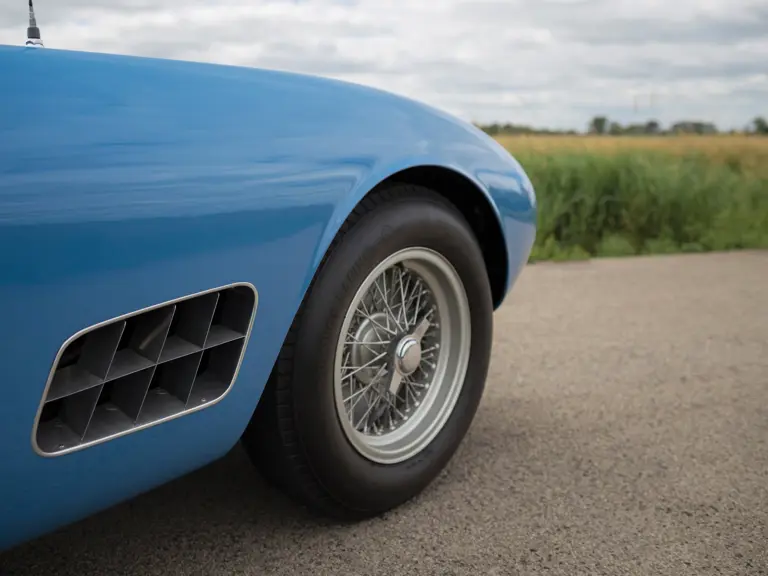
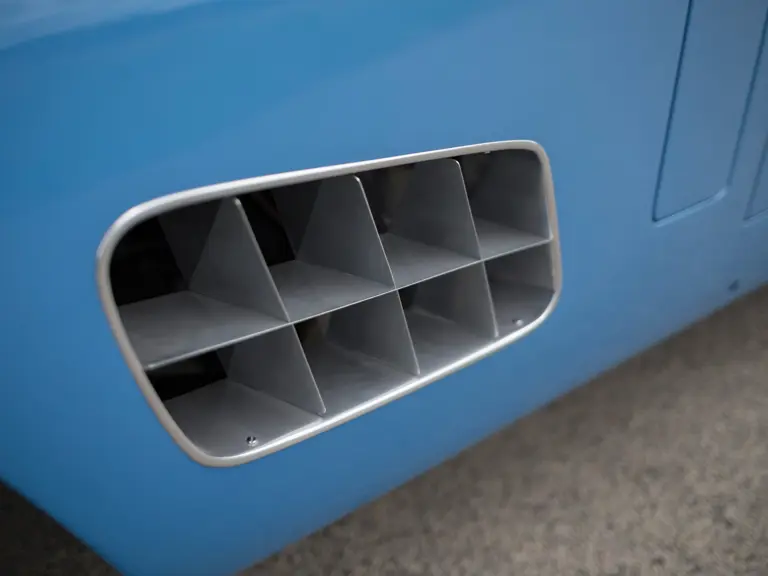
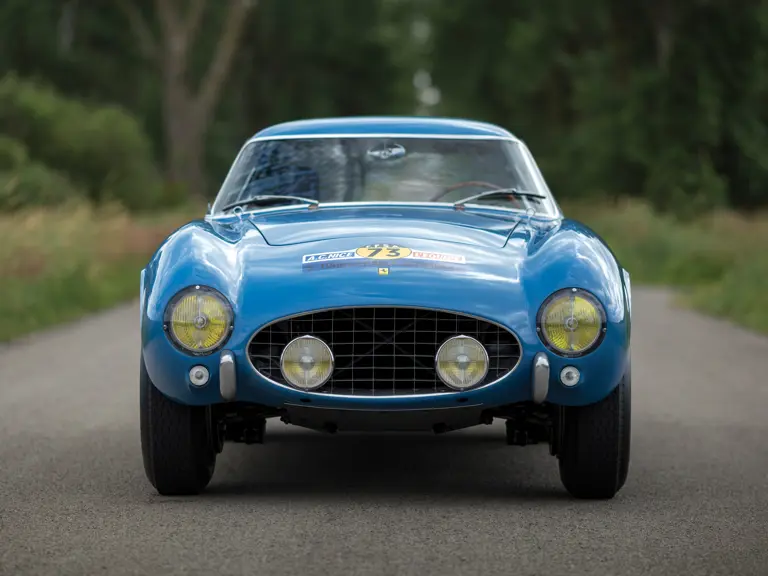

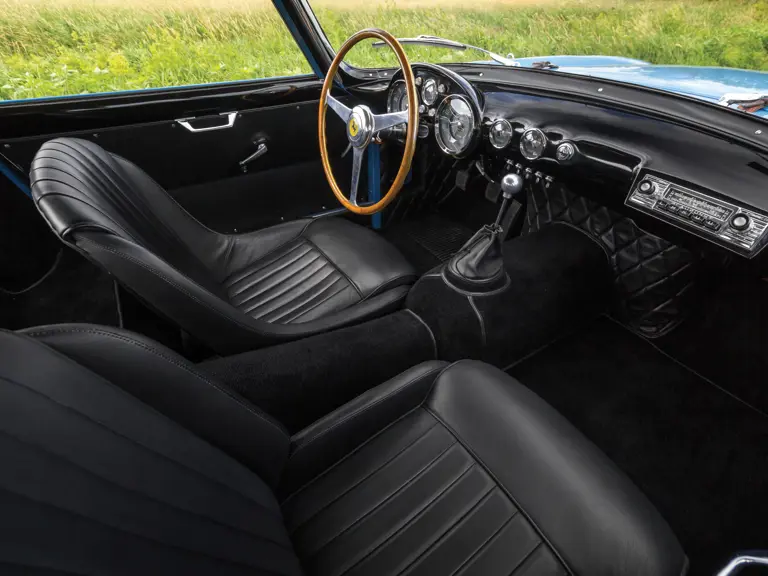
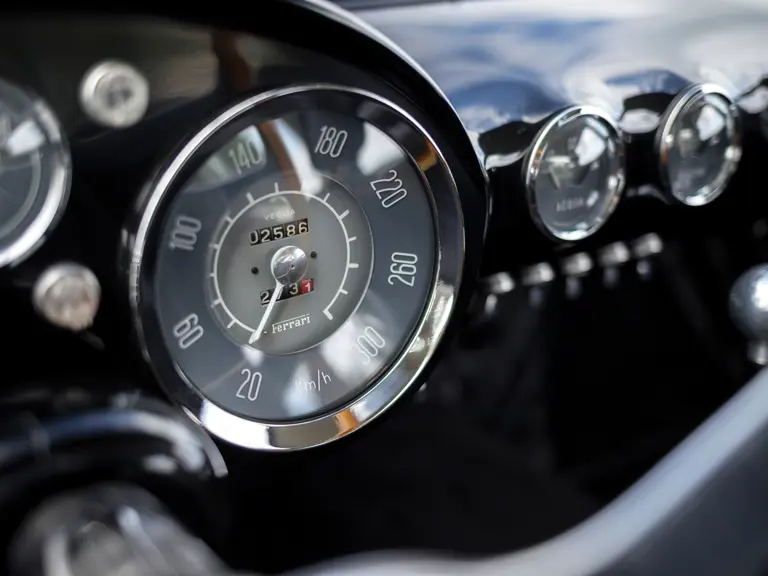
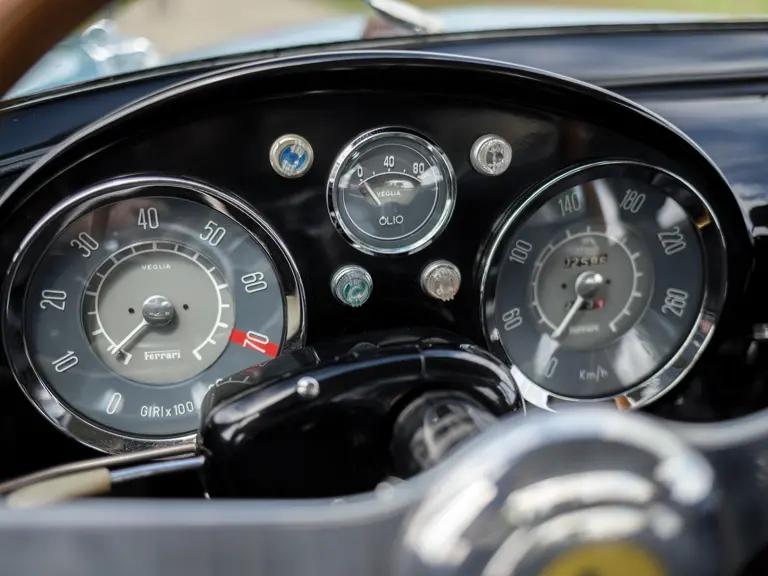
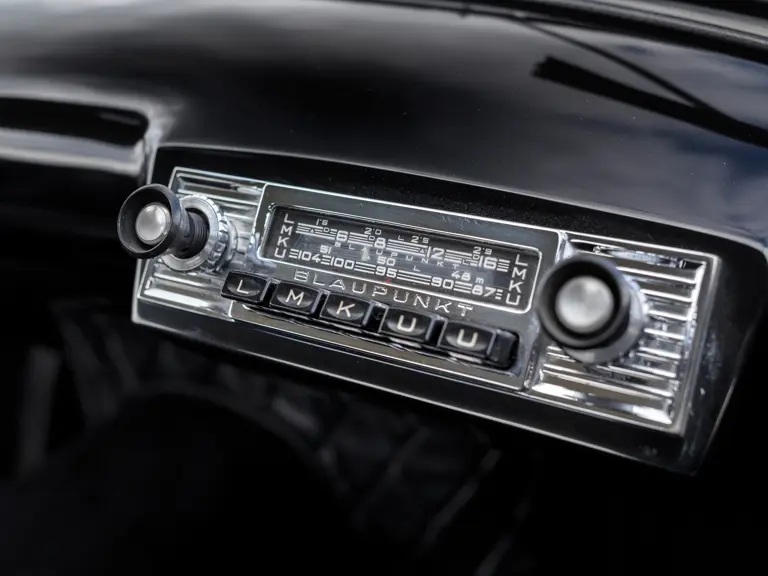
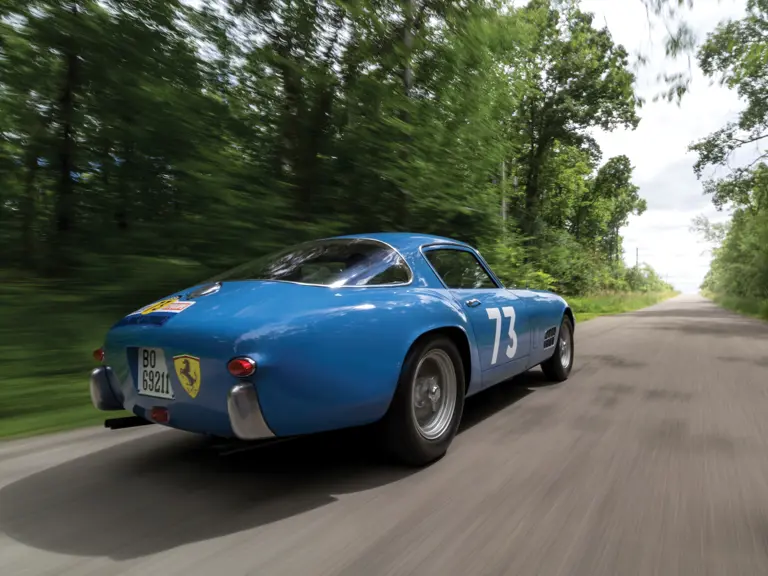

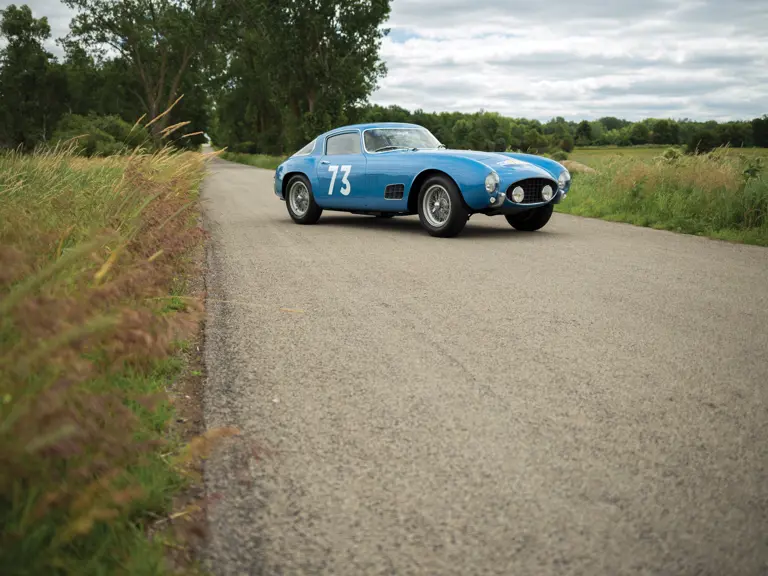
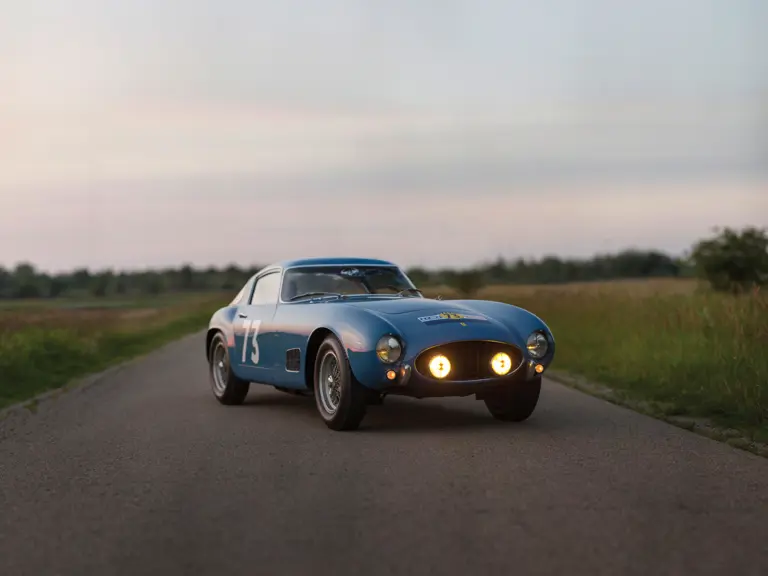
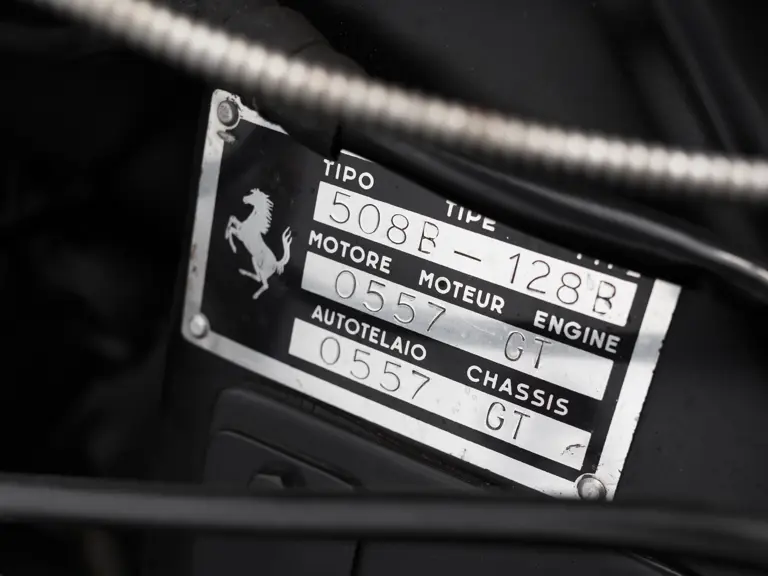
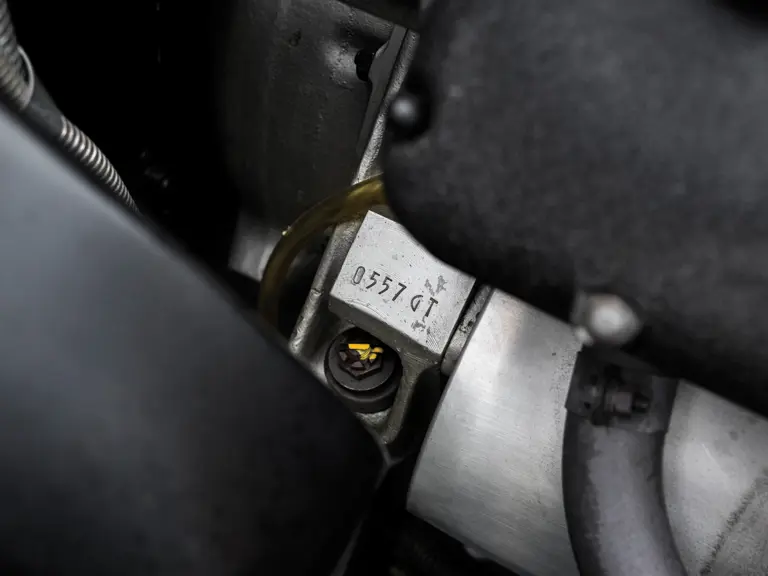
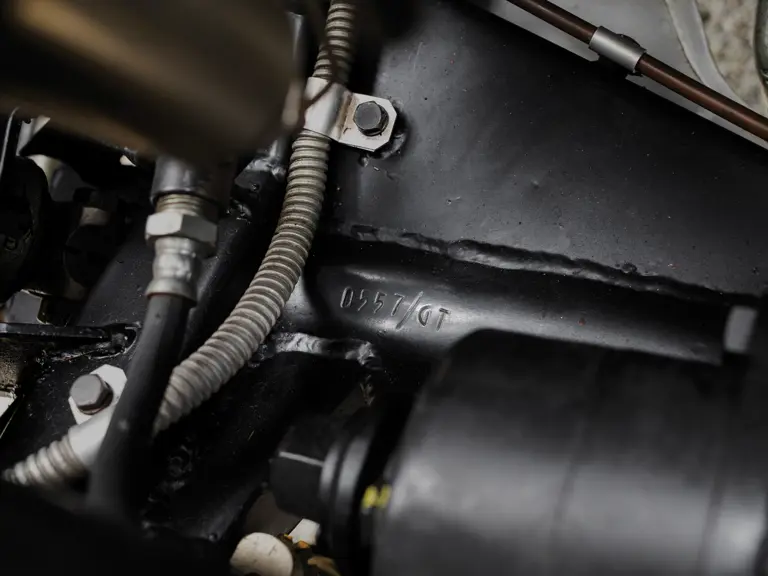

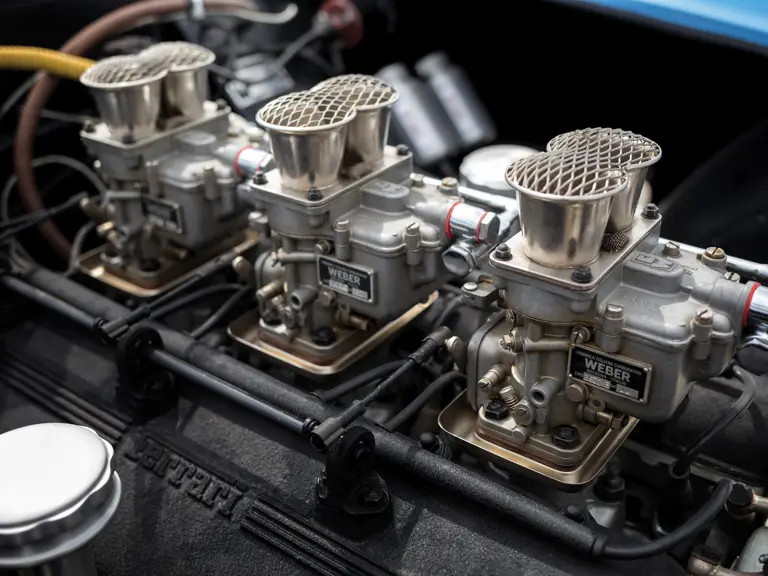
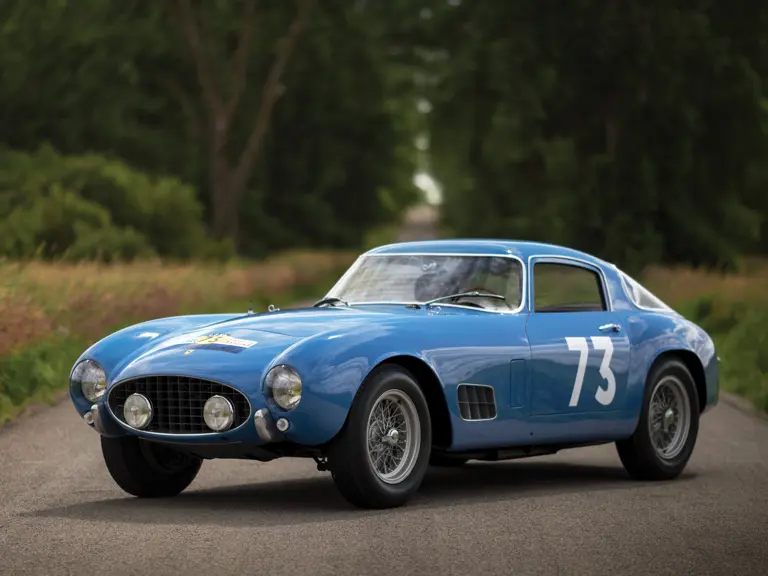
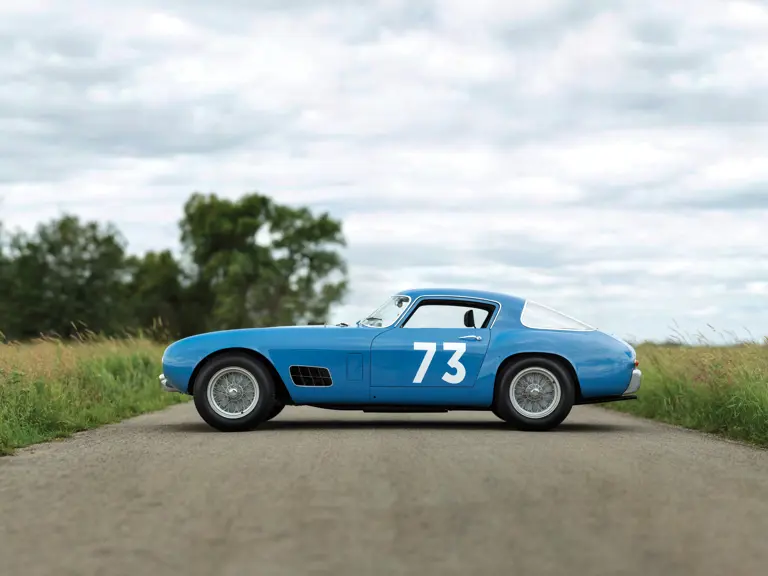
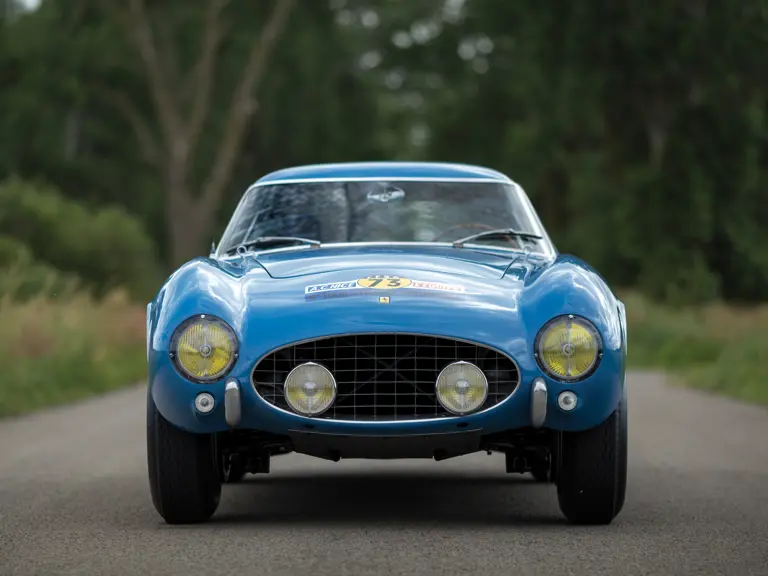
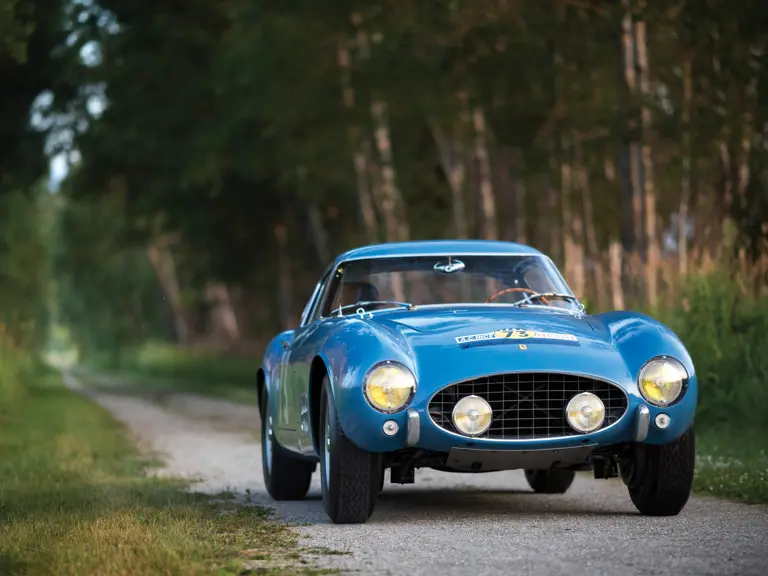
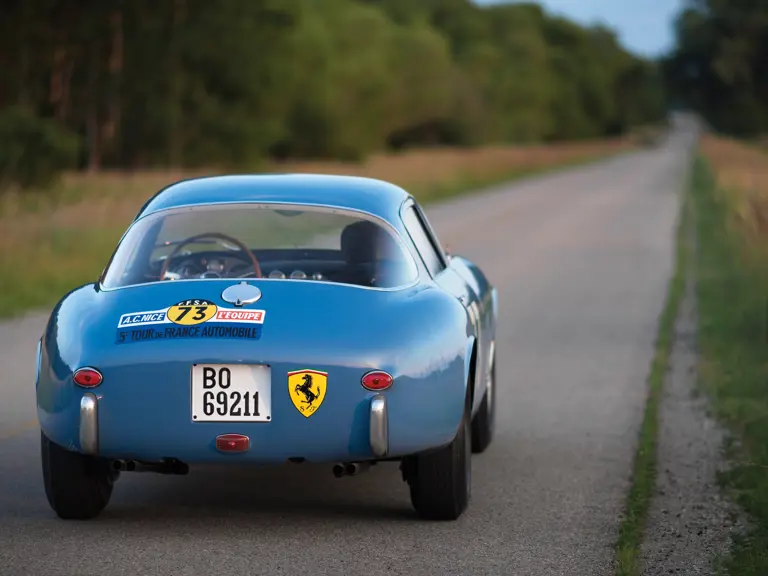
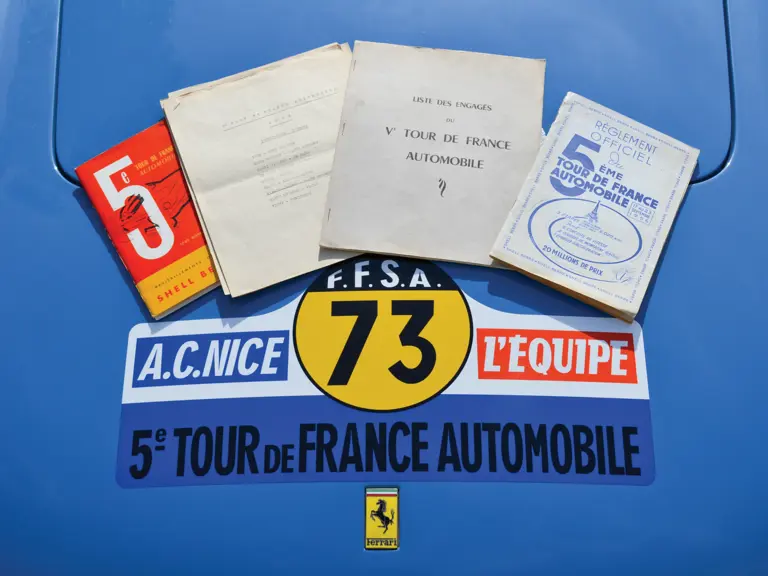

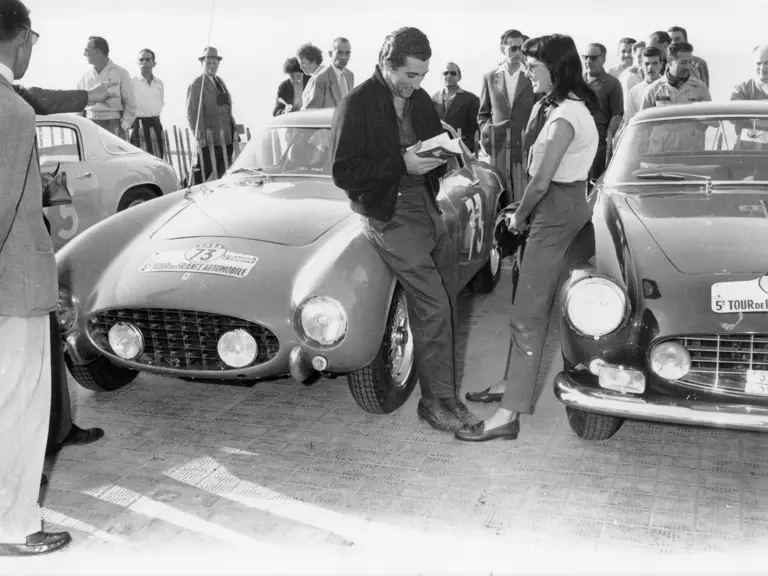
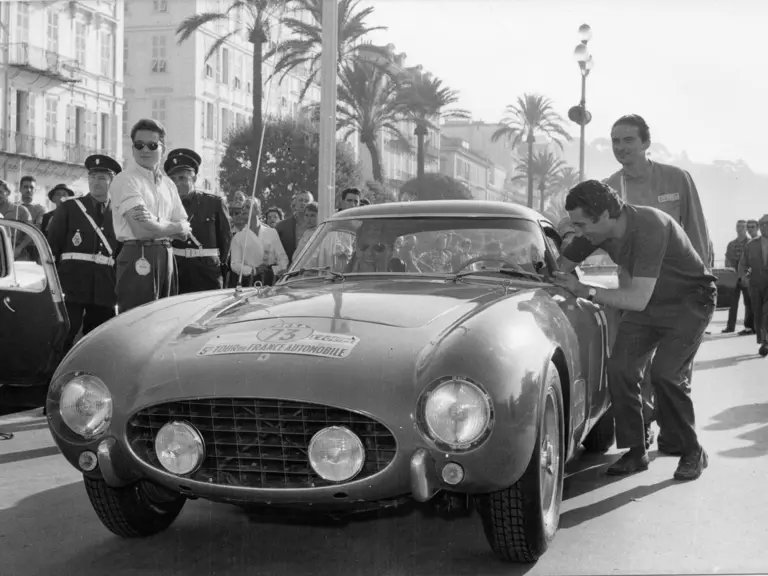

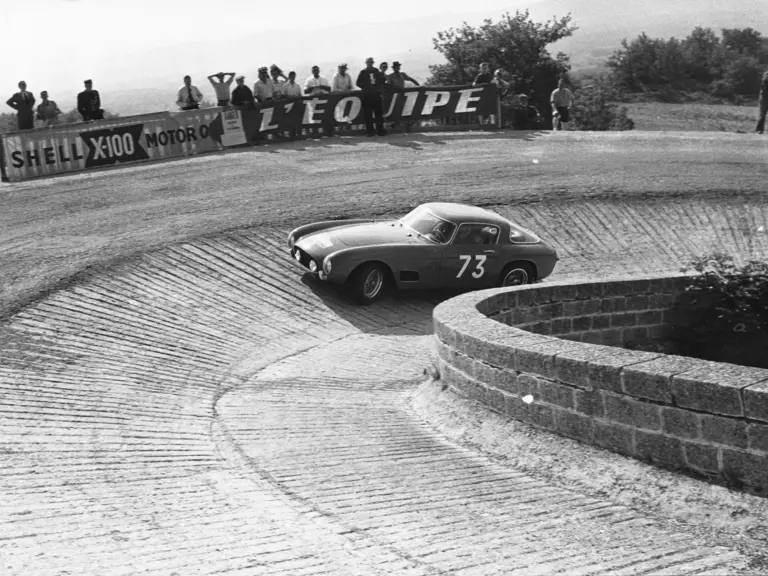
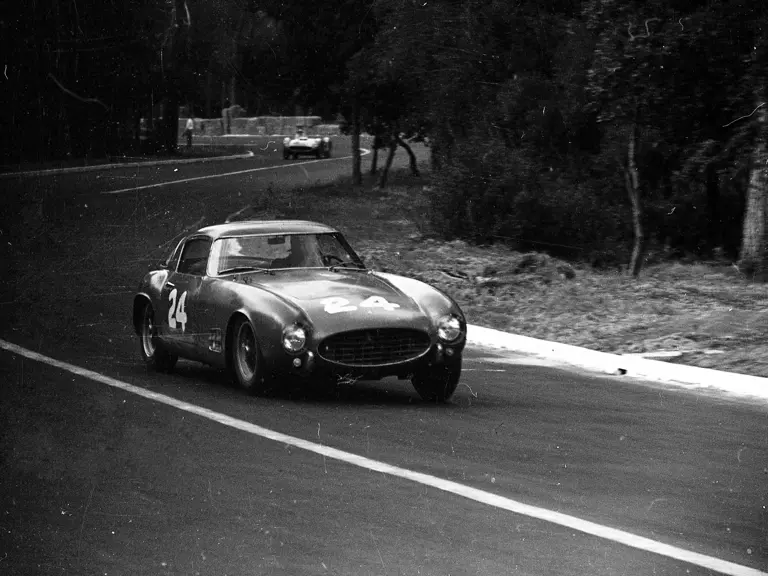


 | Monterey, California
| Monterey, California
